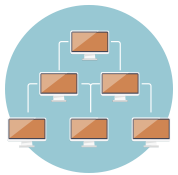Understanding The Basics Of SEO And
Its Relevance To Your Website
Let's dive into the fascinating world of search engine optimization (SEO) and explore how it can benefit your website as a scientific illustrator. Don't worry if you're new to the topic – I'll explain everything in a friendly and conversational manner.
Imagine you've created a stunning website showcasing your scientific illustrations. It's a true masterpiece, filled with breathtaking visuals and insightful content. But what good is a masterpiece if no one can find it? This is where SEO comes into play.
SEO is the practice of optimizing your website to rank higher in search engine results pages (SERPs). In simpler terms, it's all about making your website more visible and discoverable to people who are searching for topics related to your work as a scientific illustrator. By implementing effective SEO strategies, you increase the chances of your website appearing on the first page of search results, which can lead to more organic traffic and potential clients or collaborators finding your work.

Now, you might be wondering, "How does SEO actually work?" Well, search engines like Google have complex algorithms that analyze various factors to determine which websites are the most relevant and trustworthy for a particular search query. By understanding and applying SEO principles, you can optimize your website to meet these algorithmic criteria.
Let's explore a few fundamental aspects of SEO that can greatly impact your website's visibility:
Keyword Research:
Keywords are the words or phrases people use when searching for information online. By conducting keyword research, you can identify the specific keywords and phrases that are relevant to your target market.
For example, if you specialize in botanical illustrations, you might discover that keywords like "botanical art," "scientific illustration plants," or "plant anatomy illustrations" are frequently searched.
By strategically incorporating these keywords into your website's content, you increase the likelihood of search engines recognizing your site as relevant to those queries.
On-Page Optimization:
On-page optimization involves optimizing various elements directly on your website. This includes optimizing your page titles, headings, URL structure, image alt tags, and meta descriptions.
By aligning these elements with your targeted keywords, you provide search engines with clear signals about the content and purpose of your website. Additionally, creating unique and engaging content that satisfies the search intent of your audience is essential. Remember, search engines value high-quality content that provides value to users.

Link Building:
Link building is the process of acquiring links from other websites back to your own. When reputable websites link to your site, it signals to search engines that your content is trustworthy and valuable. Building a network of high-quality backlinks can significantly boost your website's authority and visibility.
As a scientific illustrator, you can consider reaching out to relevant science blogs, academic institutions, or online publications to showcase your work and request backlinks.
User Experience:
Search engines also consider user experience when ranking websites. If your website is slow to load, difficult to navigate, or not mobile-friendly, it can negatively impact your rankings. Ensure that your website is optimized for speed, easy to navigate, and visually appealing across different devices. A positive user experience will not only improve your SEO but also keep visitors engaged and encourage them to explore your scientific illustrations further.
By focusing on these core elements of SEO, you can enhance your website's visibility and increase the chances of attracting your target audience. However, it's important to remember that SEO is an ongoing process, and results may not be immediate. It takes time to build authority, earn backlinks, and climb up the search engine rankings. So be patient and consistent with your SEO efforts.
Conclusion
In conclusion, understanding the basics of SEO and implementing effective strategies can greatly benefit your website as a scientific illustrator. By optimizing your website for search engines, you can increase its visibility, attract more organic traffic, and ultimately showcase your incredible scientific illustrations to a wider audience. So, embrace the power of SEO and let your artistic brilliance shine on the digital stage!
How To Conduct Keyword Research And Incorporate Relevant Keywords Into The Website Content
Keyword research is like exploring the hidden language of search engines and discovering the phrases that resonate with your audience. So, grab your metaphorical magnifying glass, and let's dive in!
1. Put Yourself in Your Audience's Shoes:
Start by thinking like your potential clients or collaborators. Consider the topics, questions, or terms they might search for when looking for scientific illustrations. Are they interested in botanical illustrations, medical illustrations, or perhaps wildlife illustrations? Jot down any ideas that come to mind.
Imagine that your target audience doesn't just want your services for their personal needs, but actually needs them to solve their professional challenges. So, think about what they're trying to accomplish and the specific role they play in their work. It could be conducting research, publishing in a journal, or even helping patients through medical illustrations. Understanding their unique needs will help you tailor your services to meet their professional requirements.

As I mentioned in earlier chapters, in the field of scientific illustration, it often happens that our target market doesn't directly seek out illustrators to meet their needs. Our target market often looks for related service providers to fulfill their scientific illustration needs.
So the challenge of finding keywords becomes more complex. You have to do more detailed keyword research.
2. Use Keyword Research Tools:
There are various keyword research tools available that can provide valuable insights into search volume, competition, and related keywords. Some popular ones include:
These tools can help you identify specific keywords and phrases that are relevant to your niche as a scientific illustrator.
3. Expand Your Keyword List:
Take the initial keywords you brainstormed and use the keyword research tools to expand your list. Keyword research tools offer you related keywords, long-tail keywords (more specific and less competitive phrases), and terms that are trending in your field.
For example, if you specialize in marine life illustrations, you might discover keywords like "oceanic illustrations," "underwater creatures artwork," or "scientific illustrations of marine animals."
4. Consider Search Intent:
It's important to understand the intent behind a search query. Are people looking for information, inspiration, or are they ready to make a purchase? Tailoring your content to match the search intent will improve the relevance of your website.
For example, if someone searches for "types of botanical illustrations," they might be seeking educational content. You can create a blog post or page that showcases and explains different types of botanical illustrations to meet that search intent.
5. Incorporate Keywords Naturally:
Once you have a solid list of relevant keywords, it's time to incorporate them into your website's content. However, it's essential to do so in a natural and reader-friendly way.
Avoid keyword stuffing (overloading your content with keywords), as it can harm your rankings and readability. Instead, focus on creating valuable and engaging content that seamlessly integrates your keywords where they fit naturally.

6. Optimize Page Titles and Headings:
Search engines pay close attention to page titles and headings, so make sure to include your targeted keywords in these elements. For instance, if you specialize in medical illustrations, you can have a page titled "Medical Illustrations: Exploring the Intricacies of the Human Body" and use headings like "Anatomy Illustrations" or "Medical Illustrations for Education."
7. Image Alt Tags:
As a scientific illustrator, your visuals play a vital role in attracting visitors. Search engines can't "see" images, but they can understand their context through alt tags. When adding images to your website, use descriptive alt tags that include relevant keywords. For example, if you have an illustration of a plant cell, use an alt tag like "Botanical Illustration of Plant Cell Structure."
8. Create High-Quality Content:
Incorporating keywords into your content is important, but remember that quality is paramount. Craft informative, engaging, and well-researched articles, blog posts, or descriptions that provide value to your audience. When your content is genuinely useful and engaging, it will naturally incorporate relevant keywords and keep visitors coming back for more.
Conclusion
Remember, keyword research is an ongoing process. Stay up to date with industry trends, monitor your website analytics, and adapt your keyword strategy accordingly. SEO is a marathon, not a sprint, so be patient and consistent in your efforts.
By conducting thorough keyword research and incorporating those relevant keywords into your website's content, you'll increase your chances of being discovered by individuals searching for scientific illustrations. So, go forth, explore the world of keywords, and let your scientific illustrations shine brightly in the search engine cosmos!
What To Do If Your Main Target Market Doesn't Look For Your Services In Google?
When it comes to the keyword "Medical Illustration," it is a term that is highly searched by those who are interested in studying medical illustration, rather than by people who actually need the service of medical illustration.
If your main target market doesn't actively search for your services on Google, it's essential to explore alternative strategies to reach and engage with them. Here are a few suggestions to consider:
Understand Your Target Market:
Take the time to truly understand your target market and their behaviors. Identify where they spend their time online, what platforms they use, and what resources they rely on for information related to your services. This could be industry-specific forums, social media groups, or niche websites. By gaining insights into their preferences, you can tailor your marketing efforts accordingly.

Content Marketing:
Instead of relying solely on search engine visibility, focus on creating valuable and informative content that directly addresses the needs and interests of your target market. This could be in the form of blog posts, articles, videos, or even podcasts. Share this content through various channels, such as social media, email newsletters, or industry publications.
By positioning yourself as an expert in your field, you can attract and engage your target audience even if they're not actively searching for your services.
Networking and Partnerships:
Building relationships within your industry is crucial. Attend relevant conferences, trade shows, or events where you can connect with potential clients, collaborators, or industry influencers. By networking and forming partnerships, you can tap into their existing networks and gain exposure to a wider audience.
Referrals and Word-of-Mouth:
Encourage satisfied clients, colleagues, or industry contacts to refer your services to others. Positive word-of-mouth can be a powerful tool in gaining new clients, even if they aren't actively searching for your services online. Provide exceptional customer service, deliver high-quality work, and ask for testimonials or reviews to showcase your credibility and attract new clients through referrals.
Offline Marketing:
While digital marketing is important, don't overlook the power of traditional offline marketing methods. Depending on your target market, consider print advertising, attending industry-specific trade shows or conferences, distributing physical marketing materials, or even hosting workshops or presentations to establish your expertise.
Conclusion
Remember, every target market is unique, and the strategies that work best for one may not work for another. Stay open-minded, be willing to experiment, and continually assess and adjust your marketing approach based on the feedback and insights you gather. Adaptation and flexibility are key when your target market doesn't align with traditional online search behaviors.
Steps to Optimize Your Website for Search Engines
Let's explore how you can optimize various on-page elements to enhance search engine visibility for your website. By fine-tuning these elements, you can make it easier for search engines to understand and rank your content. So, let's dive in and unlock the secrets of on-page optimization!
1. Meta Tags:
Think of meta tags as little snippets of information that provide important context and enticing previews. They consist of two main components: the meta title and the meta description.
Meta Title
The meta title is like the headline of a newspaper article. It's the first thing people see in search engine results, so it needs to be catchy and informative. It should accurately summarize the content of your page while incorporating relevant keywords that your target audience might search for. A well-crafted meta title not only improves search engine visibility but also entices users to click and explore your page further.
Meta Description
Next up is the meta description. This is your chance to provide a concise summary of what visitors can expect when they click on your page. Think of it as a mini advertisement for your content. A compelling meta description not only gives users a glimpse into the value you offer but also boosts the likelihood of them clicking on your link. Make it engaging, informative, and in line with the expectations you set in the meta title.

While meta tags may not directly impact your search engine rankings, they can greatly influence click-through rates. When search engine users are scanning through a list of results, a well-crafted meta tag can make your page stand out from the competition and encourage users to click on your link.
Remember to keep your meta tags concise, clear, and relevant. Craft them with your audience in mind, using language that resonates with them. Think about what would catch their attention and make them curious to explore your page. Be mindful of the keywords you incorporate, as they should accurately reflect the content of your page.
In the end, meta tags are like ambassadors for your web page, enticing both search engines and users to discover and explore your scientific illustrations. So, craft them with care, sprinkle in some creativity, and let your meta tags shine brightly in the vast online landscape.
2. Headers:
Headers, my friend, are like signposts that break down your content into easily digestible sections. They come in different levels, such as H1, H2, H3, and so on, with H1 being the main title and the rest acting as subheadings.
Headers not only help organize your text but also guide readers through your page, making it easier for them to find the information they're looking for.
They also assist search engines in understanding the structure and hierarchy of your content, allowing them to grasp the main topics and subtopics. So, by using headers effectively, you create a well-structured and reader-friendly experience that keeps your visitors engaged and boosts your content's visibility in search results.

Include your target keywords naturally within the headers, especially in the H1 tag, which represents the main heading of the page. Use subheadings (H2, H3, etc.) to structure your content and break it into digestible sections. Headers not only help search engines understand your content but also enhance readability for your visitors.
3. URLs:
Each page of your website has its own unique URL. Yep, that's right! URLs are like individual addresses for your web pages, giving them their own identity. So, whether it's your homepage, about page, or any other page you have, each one has its own distinct URL.
They are like the street signs of the online world, guiding you to your desired destination. A URL consists of various elements, including the protocol (like "http://" or "https://"), the domain name (such as www.example.com), and the path to the specific page or resource you're seeking.

URLs are not only important for navigation but also for search engine optimization. They should be concise, descriptive, and user-friendly, giving both humans and search engines a clear indication of what to expect from the page. So, when crafting URLs, keep them relevant, readable, and easy to remember, as they play a significant role in directing visitors to your web content.
Avoid using long strings of numbers or random characters in your URLs. Instead, opt for clean and readable URLs that provide a clear idea of what the page is about. For example, instead of "www.example.com/page1?id=12345," use "www.example.com/botanical-illustrations."
4. Image Alt Tags:
As a scientific illustrator, your website likely includes captivating visuals. Don't forget to optimize the alt tags for your images. Alt tags are essential for accessibility and help search engines understand what the images depict. Use descriptive and keyword-rich alt tags that accurately describe the image content. For example, instead of "image001.jpg," use "Botanical Illustration of Rose Flower."

5. Internal Linking:
Internal linking refers to linking to other pages within your website. This practice helps search engines discover and navigate your site while establishing a hierarchical structure. Strategically incorporate internal links within your content to guide users and search engine crawlers to relevant pages. Use anchor text (the clickable text of the link) that includes relevant keywords to provide further context.
6. User-Friendly Navigation:
A user-friendly navigation structure is not only important for visitors but also for search engines. Ensure that your website's navigation is intuitive and easy to navigate. Organize your pages into logical categories and use descriptive labels for menu items. Clear navigation helps search engines understand the structure and hierarchy of your website.
7. Mobile Optimization:
With the majority of internet users accessing content on mobile devices, optimizing your website for mobile is crucial. Ensure that your website is responsive, meaning it adapts to different screen sizes and devices. Mobile-friendly websites receive a boost in search engine rankings, making it essential for improved visibility.
8. Page Loading Speed:
Website speed is an important ranking factor, as users expect fast-loading pages. Optimize your website's loading speed by compressing images, minimizing server response time, and utilizing caching techniques. A faster website not only improves search engine rankings but also enhances the user experience.
Conclusion
Remember, on-page optimization is just one piece of the SEO puzzle. While optimizing these elements is important, focus on delivering high-quality content that genuinely serves the needs of your audience. Combine on-page optimization with off-page strategies like building backlinks and engaging on social media for a well-rounded approach to SEO.
By paying attention to meta tags, headers, URLs, and other on-page elements, you'll pave the way for improved search engine visibility, allowing your scientific illustrations to reach a wider audience and make a lasting impact in the online world.
Off-Page SEO Techniques
Off-page SEO techniques involve activities outside of your website that can boost your online visibility and authority. Here are a few off-page SEO techniques to consider:

Link Building:
Build a network of high-quality backlinks pointing to your website. Reach out to reputable scientific websites, journals, or blogs and offer to contribute guest posts or provide illustrations for their articles. When they link back to your website, it signals to search engines that your site is a trusted source of information.
Social Media Engagement:
Establish a strong presence on social media platforms relevant to the scientific community, such as Twitter, Instagram, or LinkedIn. Share your illustrations, engage with scientists and researchers, and participate in relevant discussions. Social media shares and engagement can help increase your visibility and attract more visitors to your website.
Online Directories and Communities:
Submit your website to relevant online directories or platforms for scientific illustrators. These directories serve as a centralized hub for potential clients searching for scientific illustrators.
Additionally, join online communities or forums where scientists or researchers discuss their work. Actively participate and contribute valuable insights while mentioning your expertise as a scientific illustrator when appropriate.
Conclusion
Remember, SEO is an ongoing process, and it takes time to see results. Consistency, quality, and relevance are key. By implementing both on-page and off-page SEO techniques, you can improve your website's visibility, attract more clients, and establish yourself as a trusted scientific illustrator in the online space.
